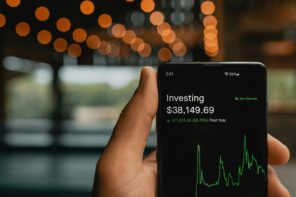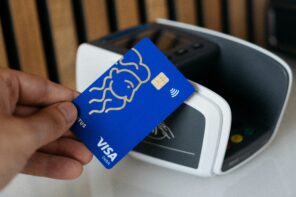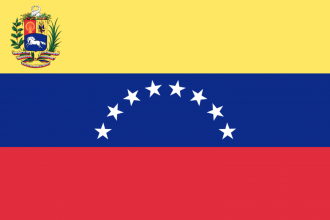The COVID-19 pandemic has catalyzed technological adoption and accelerated innovation in even the most static of industries. The long-standing financial institutions of the Western world have not been exempt from the changing tides. With stay-at-home orders limiting mobility across society, people needed online bank accounts to satisfy their personal banking needs and turned to a growing cohort of recently-formed technology companies that provide a digitized, user-oriented iteration of traditional banking services. What is this “neobank revolution” and are they here to stay?
Contrary to what the etymology might suggest, neobanks are not actually chartered banks. That is, instead of directly holding the funds passed through their products and generating income on the interest revenue, these companies derive most, if not all their revenue, from interchange fees on debit card transactions. The neobank pairs with regional chartered banks that take on liability for and store the deposits the financial technology company receives from its users. In return, the smaller chartered bank gets a cut of the interchange fees and access to the new business brought in by the neobank, particularly from underbanked segments of the population.
There is a prevailing narrative that traditional financial institutions are inefficient and uncompromising to the point that they have alienated a significant portion of the population they are meant to serve.
There is a prevailing narrative that traditional financial institutions are inefficient and uncompromising to the point that they have alienated a significant portion of the population they are meant to serve. A 2018 study by the Federal Reserve claimed that 23% of Americans were underbanked or unbanked, with a disproportionate amount of these individuals with low creditworthiness being visible minorities. By bypassing the difficult, time-consuming, and expensive charter process, along with the cost savings from forgoing physical branches, neobanks generally run streamlined businesses which enable lending to borrowers outside of the risk appetite for traditional financial institutions. The resulting transaction-fee-based business model of a non-chartered bank bodes well with their target demographic: people of lower socioeconomic status tend to save less and spend more. With that being said, there is also a social justification for providing access to capital for underserved communities.
Many neobanks have articulated this noble cause in their business strategies with companies such as First Boulevard targeting the African American community, Jassby running financial literacy campaigns for children, and Dave helping their users to find jobs. While the increasing prevalence of neobanking is by no means a catch-all solution to economic inequality, it does induce a level of incremental change by providing a clearer mechanism to escape the cycle of poverty. In addition to those who have been left behind by the current system, a fintech solution to banking also appeals to people around the world who had their lives displaced and experienced extreme financial instability in the aftermath of the 2008 financial crisis. Broadly speaking, there is a deep-seated mistrust of big banks amongst the population. The prospect of a banking platform with no hidden fee structures, better service, and greater transparency is thus naturally more appealing.
Largely by necessity, neobanks were one of the biggest winners coming out of the pandemic.
Largely by necessity, neobanks were one of the biggest winners coming out of the pandemic. During the first two quarters of 2020, mobile banking usage grew by 34% while banking at local branches decreased by 12%, helping to drive the global neobank market size to $47.1bn by year-end. According to data company Apptopia, 20 million neobank app downloads in the first half of 2021 alone contributed to a doubling of active users since Q2 2019. To highlight some specific players: Chime, the largest American player, announced in August of this year that it had raised $750 million in a Series G funding round at a valuation of $25 billion, making it the 14th largest of all lending institutions in the United States. Revolut, the single largest startup of any kind in the UK, recently applied for a banking license in the US to offer more traditional financial products. Neo Financial, a Calgary-based neobank backed by PayPal founder Peter Thiel, raised $64 million in a Series B funding round last month.
We may see some brick and mortar financial insitutions making strategic acquisitions of neobanks to diversify their offerings and keep up to date on consumer preferences.
The shifting financial services landscape moving forward will be difficult to navigate for both neobanks and traditional banks alike. The online banking services of large banks have been around for a while, but don’t offer the same level of innovation or focus on the under-represented as their neo-counterparts. As a result, we may see some brick and mortar financial institutions making strategic acquisitions of neobanks to diversify their offerings and keep up to date on consumer preferences. On the other hand, neobanks will need to navigate regulatory headwinds and growing pains. While legislation often lags innovation, we are beginning to see increased regulatory scrutiny on both the data privacy front and on the labeling of these pseudo-financial institutions. For example, in May this year, the California Department of Financial Protection and Innovation ordered Chime to stop misleading its customers by calling itself a bank. In the long run, these companies must also consider diving into the lending business as an interchange-fee-driven topline has thinner margins and requires a sustained high volume of transactions. Due to the popular desire for change, neobanks will undoubtedly play a role in our future financial services ecosystem. The main question is whether they will tuck into the current system as a complimentary service, or if they can truly displace the giant brick and mortar institutions they were conceived to challenge.








